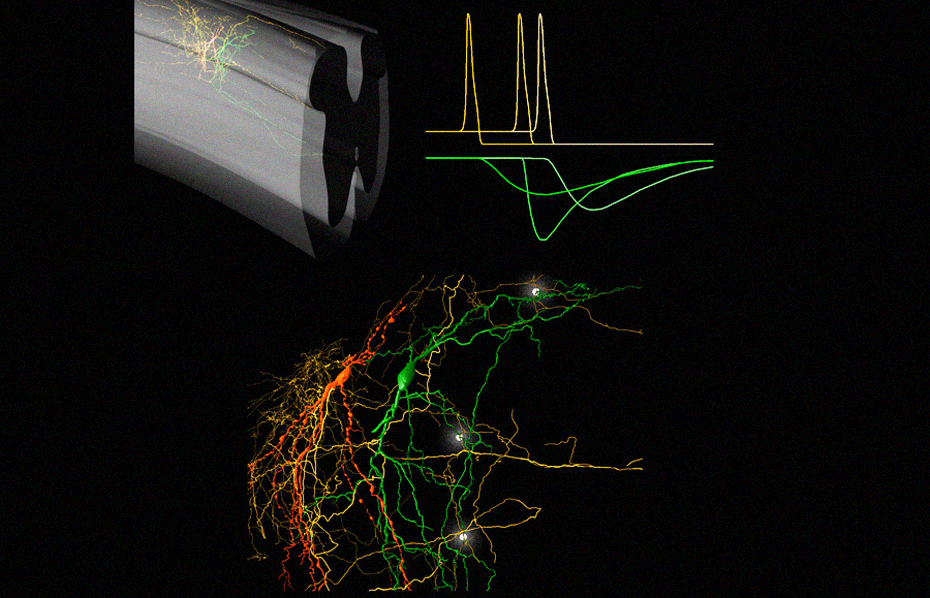Neuronal Networks
ABOUT
We address basic questions of functional organization of spinal and supraspinal neuronal networks. Patch-clamp electrophysiology, imaging techniques, anatomical reconstructions, behavioural tests, immunocytochemistry and computer modelling are combined to study the architecture of individual neurons, their connectivity and functional role in specific circuitries.
- Projection and local-circuit neurons in the spinal superficial dorsal horn are important elements of nociceptive processing system and are involved in development of chronic pain states. We are interested in studying organization and mechanisms of synaptic transmission from primary afferents to the dorsal horn neurons and between different classes of intrinsic superficial dorsal horn neurons. We also investigate specific properties of nociceptive synapses: types of receptors involved, transmission efficacy and its activity-dependent regulation. Detailed 3D computer models of neurons are created and used to understand how the signal propagates in their dendritic and axon trees.
- Monoaminergic and cholinergic pathways are implicated in the modulation of neuronal circuits and their disruption leads to severe central nervous system pathologies including epilepsy, depression, cognitive deficits, pain syndromes, neuroinflammation and astroglial dysfunction. One of our objectives is to unravel the mechanisms by which changes in monoaminergic and cholinergic transmission can cause these disorders.
RESEARCH
- Development of a technique for a high-resolution imaging of unstained neurons in the spinal cord for studying structurally preserved networks.
- Classification of the local axon collaterals of lamina I projection neurons, showing that these cells are also involved in the local and propriospinal processing.
- Description of a multisegmental convergence of nociceptive afferents on lamina I neurons as a possible mechanism of referred pain.
- Demonstration of synaptic connectivity between lamina I neurons.
- Finding that nociceptive processing in lamina II is dominated by excitatory interneurons.
- We have shown that an excitatory interneuron forms multiple functional synapses on a postsynaptic neuron, and a transmitter release from one neuron can be sufficiently strong to excite a postsynaptic neuron.
- Evidence for functional activation of Ca2+-permeable AMPA receptors by a glutamate release from lamina I-II interneurons.
- First description of plasticity in synapses of excitatory interneurons in the dorsal horn; long-term potentiation (LTP) can be caused by activation of prewired, but initially ‘silent’, synapses.
- Creation of detailed 3D computer models of lamina I projection and local neurons.

Monosynaptically connected lamina I neurons: projection neuron (red) and local-circuit neuron (green).
Team
Joana Soares
Collaborator
Peter Szucs
Collaborator
Ongoing Projects
Left-Right Side-Specific Neuroendocrine Signaling in Neurology and Basic Neuroscience
Reference: UU-PROJ 2022/652Proponent: Instituto de Investigação e Inovação em Saúde - Universidade do Porto
Sponsor: Uppsala University
From 01-JUN-23 to 31-DEC-26

